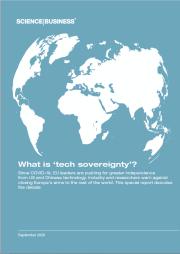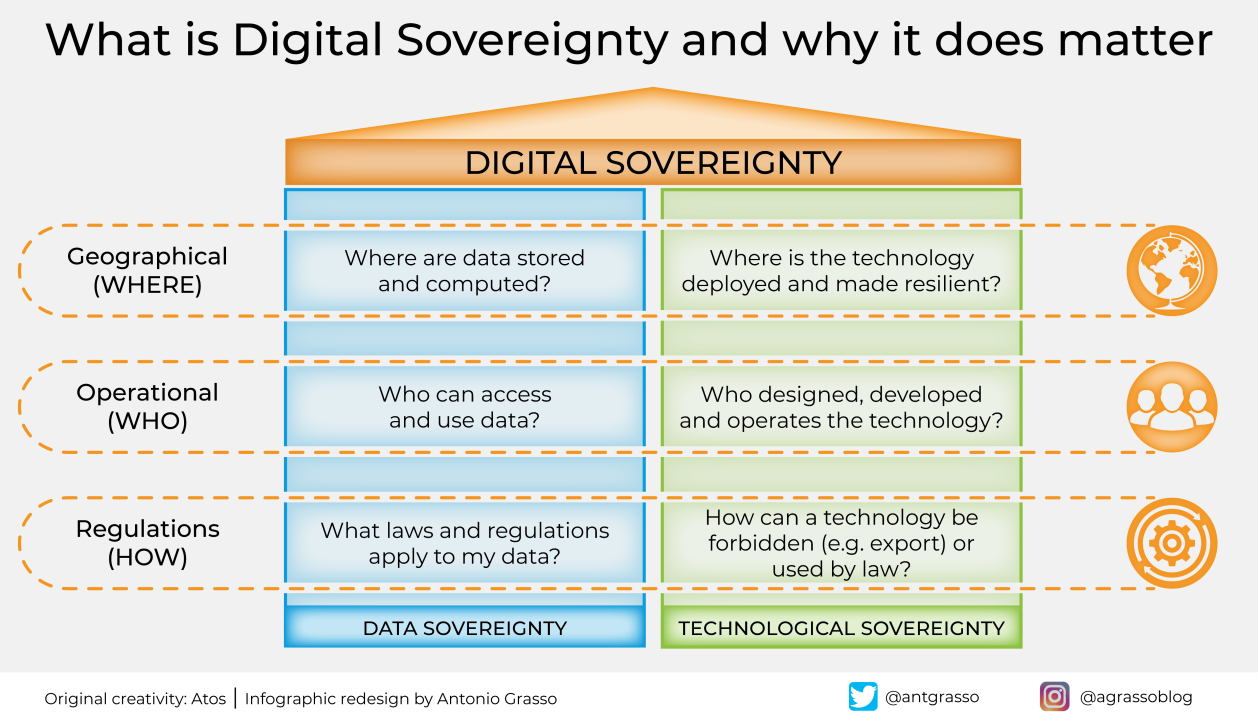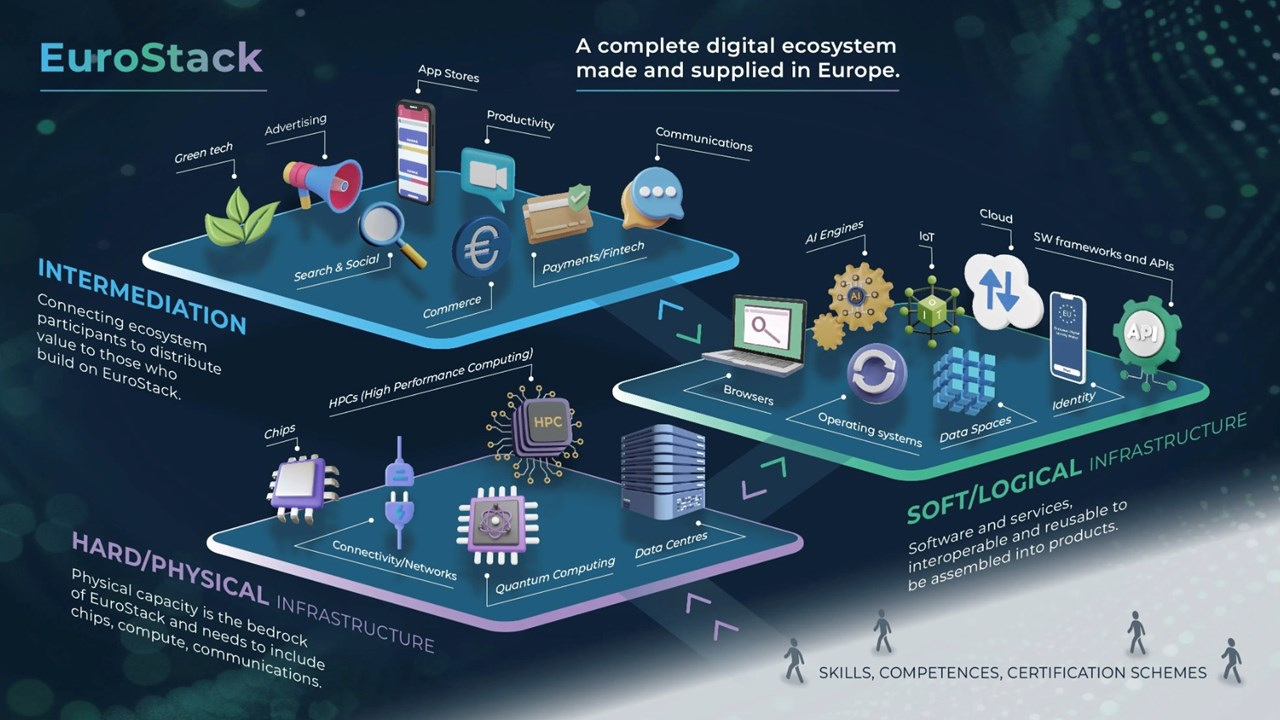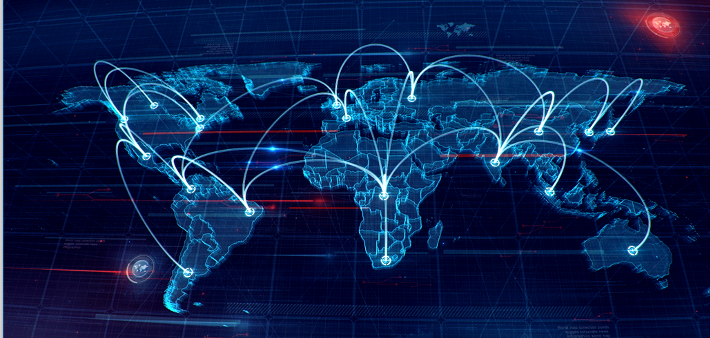In an increasingly interconnected world, where digital technologies underpin every facet of modern life, tech sovereignty has emerged as a critical imperative. Recent geopolitical shifts, economic disruptions, and heightened digital vulnerabilities have ignited a fierce global race among nations to assert greater control over their technological destinies.
Tech sovereignty is more than self-sufficiency; it's a multifaceted pursuit of strategic autonomy in critical technological domains. It encompasses a nation's ability to develop, produce, and control foundational technologies that drive its economy, secure its national interests, and uphold its societal values, free from undue external influence. This pursuit is deeply intertwined with national security, data governance, and a nation's future.
The stakes are high. Control over cutting-edge technologies like AI, semiconductors, quantum computing, and advanced telecommunications is seen as key to future prosperity, military advantage, and global leadership. Nations are investing unprecedented resources, implementing ambitious industrial policies, and forging new alliances to secure their position.
This article will delve into the drivers behind the global push for tech sovereignty, exploring national security, economic, and geopolitical motivations. We will examine key technological arenas, analyze diverse national strategies, and consider the profound challenges and implications of this race. Understanding tech sovereignty is essential for comprehending the future of global power dynamics and the nature of innovation itself.

The Drivers of the Tech Sovereignty Race
The global acceleration towards tech sovereignty is a strategic imperative driven by powerful, often intertwined, motivations:
National Security Concerns
Technological dependencies can translate directly into vulnerabilities. Nations fear risks from foreign technology in critical infrastructure or defense systems:
•Cybersecurity Threats: Dangers from backdoors, vulnerabilities, or compromised components in foreign hardware and software drive the need for control over the entire technology stack.
•Dual-Use Technologies: Technologies like AI and quantum computing have both civilian and military applications, making their control vital for defense and preventing adversaries from gaining an edge.
•Surveillance and Data Exploitation: Concerns over foreign access to sensitive national data, whether legal or clandestine, push for data localization and domestic control over data infrastructure.
Economic Competitiveness
Control over cutting-edge technologies is increasingly recognized as the primary determinant of future economic prosperity and global influence:
•Control Key Industries: Dominance in sectors like semiconductors, AI, and biotechnology translates into high-value job creation and export opportunities.
•Protect Intellectual Property (IP): Safeguarding domestic innovation and preventing IP theft is crucial for maintaining a competitive edge.
•Foster Domestic Innovation Ecosystems: Investment in R&D, talent development, and supportive regulatory environments cultivates vibrant domestic innovation.
Geopolitical Influence
Technology's role in shaping geopolitical influence has never been more pronounced. Tech sovereignty is a means to project power and shape the international order:
•Technological Leadership: Leadership in critical technologies confers soft power and diplomatic leverage, allowing nations to set global standards.
•Strategic Autonomy: Reducing reliance on rivals for critical technologies enhances a nation's ability to pursue foreign policy objectives without coercion.
•Alliance Building: Collaboration with like-minded nations builds resilient supply chains and shared technological capabilities.
Data Governance and Privacy
The explosion of data and reliance on digital services make data governance a national concern:
•Control over Citizen Data: Ensuring sensitive national data is stored, processed, and governed according to domestic laws and values.
•Differing Regulatory Frameworks: Divergent data privacy regulations reflect national values, driving efforts to control the digital infrastructure handling such data.
Supply Chain Resilience
Recent crises have exposed supply chain fragility, particularly in critical technological components:
•Reducing Reliance on Single Points of Failure: Diversifying suppliers and bringing critical manufacturing capabilities onshore reduces vulnerability to disruptions.
•Strategic Stockpiling: Stockpiling critical components buffers against future supply shocks.
These drivers collectively highlight that technological self-determination is a fundamental pillar of national strength and security, profoundly shaping the 21st-century global order.

Key Arenas of the Tech Sovereignty Battle
The pursuit of tech sovereignty is fought across multiple, interconnected technological fronts, deemed critical for future prosperity, security, and leverage:
Semiconductors: The Foundational Technology
Semiconductors are the bedrock of the digital age. Global reliance on a few key manufacturers has exposed vulnerability, driving intense efforts to secure domestic or allied control:
•Domestic Manufacturing (Fabs): Billions are poured into incentivizing advanced chip fabrication plants (fabs) within national borders (e.g., US CHIPS Act, EU Chip Act).
•R&D and Design: Control over chip design and cutting-edge research in materials science and lithography is paramount.
•Talent Development: Addressing the shortage of skilled engineers and technicians through STEM education and talent pipelines.
Artificial Intelligence (AI): The General-Purpose Technology
AI has the potential to transform every industry. Control over AI development and deployment is a central pillar of tech sovereignty:
•Data Access and Control: Control over vast datasets is crucial for training and refining advanced AI systems.
•Algorithmic Control and Explainability: Ensuring AI algorithms are transparent, unbiased, and aligned with national values.
•Ethical AI Development: Nations race to establish ethical guidelines and regulatory frameworks for AI, shaping global norms.
•Military Applications: AI's potential in defense makes it a critical component of military tech sovereignty.
Quantum Technologies: The Next Frontier
Quantum computing, communication, and sensing represent the next wave of disruptive technologies, with potential to revolutionize various fields:
•Quantum Computing: Could provide an insurmountable advantage in fields like materials science, finance, and cryptography.
•Quantum Communication (QKD): Offers inherently secure communication, vital for national security.
•Quantum Sensing: Could revolutionize navigation, medical imaging, and geological exploration.
5G/6G and Telecommunications Infrastructure: The Digital Backbone
Control over underlying telecommunications infrastructure is fundamental to digital sovereignty. The rollout of 5G/6G is a geopolitical battleground:
•Trusted Vendors: Concerns over national security risks from certain foreign vendors lead to restrictions.
•Domestic Development: Investment in developing national telecommunications equipment and software reduces reliance on foreign suppliers.
•Network Security: Ensuring resilience and security of national communication networks against cyberattacks and espionage.
Cybersecurity and Digital Infrastructure
Overall security and resilience of a nation's digital infrastructure are paramount:
•National Firewalls and Internet Governance: Some nations implement strict controls over internet access and content.
•Secure Data Centers and Cloud Infrastructure: Ensuring national data resides within secure, domestically controlled platforms.
•Digital Identity and Authentication: Developing secure national digital identity systems to protect citizen data.
Space Technology: The New High Ground
Space is a critical domain for national security and economic development. Control over space assets is a growing aspect of tech sovereignty:
•Satellite Networks: Independent satellite navigation, communication, and earth observation systems provide critical capabilities.
•Launch Capabilities: Ability to independently launch satellites ensures access to space.
•Space-Based Internet: The race to deploy LEO satellite constellations has significant implications for digital connectivity and control.
These arenas highlight the comprehensive nature of the tech sovereignty race, where nations strive for control across the entire technological spectrum.

Strategies Employed by Nations
Nations deploy diverse strategies to achieve tech sovereignty, combining domestic policy with international engagement:
Investment in Research and Development (R&D)
Massive and sustained investment in R&D is at the heart of any tech sovereignty strategy:
•Government Funding: Direct funding for basic and applied research in universities, national labs, and private companies.
•Public-Private Partnerships: Fostering collaboration to accelerate research translation into commercial products.
•National Labs and Centers of Excellence: Strengthening specialized research institutions focused on strategic tech areas.
Talent Development and Retention
A skilled workforce is indispensable for innovation:
•STEM Education: Prioritizing investment in science, technology, engineering, and mathematics education.
•Immigration Policies: Attracting and retaining top global talent through favorable visa policies.
•Reskilling and Upskilling Programs: Investing in programs to retrain existing workforces for new technologies.
Industrial Policy and Subsidies
Nations are embracing active industrial policies to nurture strategic industries:
•Tax Breaks and Grants: Financial incentives for domestic manufacturing, R&D, or job creation in critical tech sectors.
•Subsidies for Domestic Production: Direct financial support to reduce the cost of producing strategic goods domestically.
•Protectionist Measures: Tariffs, quotas, or trade barriers to protect nascent domestic industries.
Export Controls and Sanctions
Nations use export controls and sanctions to limit rivals' access to critical technologies:
•Dual-Use Technology Restrictions: Strict controls on exporting technologies with both civilian and military applications.
•Entity Lists and Blacklists: Designating foreign entities deemed national security risks, restricting their access to advanced technologies.
•Investment Screening: Reviewing and blocking foreign investments in domestic companies with critical technologies.

Standard Setting and Regulation
Influencing international technical standards and establishing domestic regulatory frameworks shapes the future of technology:
•Participation in International Bodies: Active engagement in standards organizations to align emerging technologies with national values.
•Data Localization Laws: Mandating data storage and processing within national borders for domestic legal oversight.
•Ethical AI Frameworks: Developing national guidelines for ethical AI development and deployment.
International Alliances and Partnerships
Strategic alliances are key, as complete autarky is often unfeasible:
•Collaborative R&D: Pooling resources with trusted allies to accelerate research.
•Resilient Supply Chains: Working with allies to diversify supply chains and create trusted networks.
•Information Sharing: Collaborating on cybersecurity threats and best practices.
•Common Fronts: Presenting a united front against unfair trade practices or technological aggression.
These diverse strategies illustrate the comprehensive approach nations take to secure their technological future.

Challenges and Implications
The pursuit of tech sovereignty, while driven by legitimate interests, presents significant challenges and profound implications:
Fragmentation of the Global Tech Ecosystem
Prioritizing domestic control risks fragmenting the global tech ecosystem, hindering the free flow of technology, data, and talent:
•Decoupling and Dual Ecosystems: Emergence of distinct tech ecosystems could lead to incompatible standards and reduced interoperability.
•Reduced Innovation: Fragmentation could stifle innovation by limiting access to diverse perspectives and talent.
•Increased Costs: Duplicating R&D and supply chains leads to higher costs for consumers and businesses.
Increased Costs and Reduced Efficiency
Self-sufficiency often comes at a significant economic cost. Building domestic manufacturing requires massive investments that may not be economically efficient, leading to:
•Higher Production Costs: Domestic production may lack economies of scale, resulting in more expensive goods.
•Subsidies and Protectionism: Governments may need to provide ongoing subsidies or protectionist measures, potentially distorting markets.
Risk of Protectionism and Trade Wars
Emphasis on national control can escalate trade tensions, potentially leading to trade wars that harm global trade and economic growth.
Ethical Dilemmas and Human Rights Concerns
Aggressive tech sovereignty can raise serious ethical and human rights concerns:
•Balancing National Interests with Global Collaboration: Tension between national control and global cooperation on issues like climate change.
•Surveillance and Censorship: Digital sovereignty can be a pretext for increased state surveillance and control over information.
•Digital Divide: Protectionist policies could exacerbate the digital divide for developing nations.
Impact on Developing Nations
Developing nations may find themselves caught in the crossfire:
•Limited Access to Advanced Technologies: Restrictions on technology transfer could hinder their economic development.
•Pressure to Choose Sides: May be pressured to align with one technological ecosystem over another.
•Increased Dependency: Paradoxically, major powers' pursuit of tech sovereignty could increase dependency for smaller nations.
These challenges underscore the complex trade-offs inherent in tech sovereignty. A balanced approach, recognizing both strategic autonomy and international collaboration, is essential.
Conclusion
Tech sovereignty has rapidly ascended to the forefront of national agendas, driven by national security, economic ambitions, and geopolitical rivalries. The global technological landscape is profoundly reshaping as nations race to control the next wave of innovation.
However, this competition presents significant challenges: fragmentation of the global tech ecosystem, increased costs, and ethical dilemmas. The balance between a nation's need for strategic autonomy and the benefits of global collaboration remains a delicate negotiation.
Ultimately, the future of tech sovereignty will likely be characterized by a dynamic tension between competition and cooperation. While complete independence may be elusive, nations will continue to strive for greater control over critical technologies. The challenge for global leaders is to navigate this complex terrain, fostering an environment where national interests are secured without stifling innovation and interconnectedness. The race for tech sovereignty is not just about who controls the technology, but how that control will shape the future of our interconnected world.





